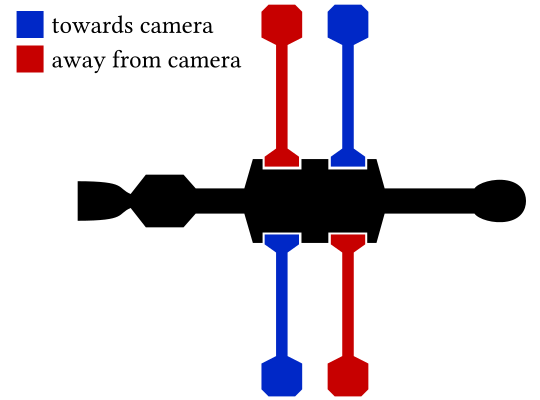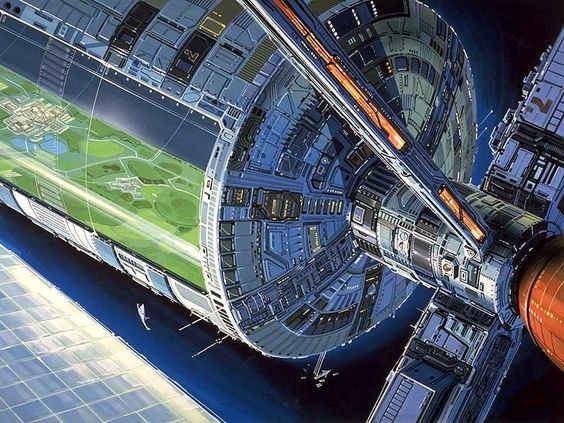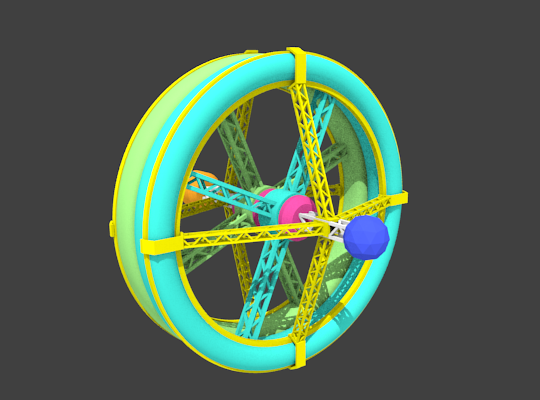snrdg121408
Mongoose
Evening PDT all,
Question 1.
Double Hull: HG 2e pp. 10 & 12
This is a two-hulled cylinder where the outer hull (the whole, or at least a part) spins to create gravity and the inner hull does not. The outer hull is kept at around 1G by the speed of its spinning and is used for any areas that will be inhabited for extended periods of time, such as crew quarters. The outer, spun hull must be at least 60 tons. Machinery to spin a double hull uses 0.1 ton for every ton of outer hull. For each full percent of the total hull which is made part of the spun hull, the cost of the hull must be increased by +1%.
Hamster Cage: HG 2e p. 12
This is a series of spun rings set at right angles to the rest of the hull. The rings must have a radius of at least 15 metres in order to produce a gravitational field. Machinery to spin a hamster cage uses 0.1 tons for every ton of spun ring. Unlike other designs,
the hamster cage is usually set at right angles to the hull and installed in counter-rotating pairs, eliminating torque effects on the ship’s attitude. For each full percent of the hull which is made part of the hamster cage, the cost of the hull must be increased by +2%.
I've checked through a number of topics to verify how to calculate the increased hull cost when using a double hull or hamster cage and as usual my efforts failed.
To keep this simple, or I hope this is simple, a standard ship of 100 d-ton is built as a double hull at a cost of MCr5. Per the rules the minimum size of the out hull is 60 d-tons. The outer hull is 60% of the hull which means the hull cost is increased by 60%. The hull cost increase is MCr5 x 0.6 = MCr3 or MCr5 x 1.6 = MCr8.
A 60 meter hamster cage, yeah probably not a good idea but this way I only change the percentage, cost for the same hull is going to be 60% x 2% = 120%. The cost is MCr5 x 2.2 = MCr11.
Do I have the calculation correct to determine the cost?
Question 2:
What configurations can double hulls and hamster cage use?
Question 1.
Double Hull: HG 2e pp. 10 & 12
This is a two-hulled cylinder where the outer hull (the whole, or at least a part) spins to create gravity and the inner hull does not. The outer hull is kept at around 1G by the speed of its spinning and is used for any areas that will be inhabited for extended periods of time, such as crew quarters. The outer, spun hull must be at least 60 tons. Machinery to spin a double hull uses 0.1 ton for every ton of outer hull. For each full percent of the total hull which is made part of the spun hull, the cost of the hull must be increased by +1%.
Hamster Cage: HG 2e p. 12
This is a series of spun rings set at right angles to the rest of the hull. The rings must have a radius of at least 15 metres in order to produce a gravitational field. Machinery to spin a hamster cage uses 0.1 tons for every ton of spun ring. Unlike other designs,
the hamster cage is usually set at right angles to the hull and installed in counter-rotating pairs, eliminating torque effects on the ship’s attitude. For each full percent of the hull which is made part of the hamster cage, the cost of the hull must be increased by +2%.
I've checked through a number of topics to verify how to calculate the increased hull cost when using a double hull or hamster cage and as usual my efforts failed.
To keep this simple, or I hope this is simple, a standard ship of 100 d-ton is built as a double hull at a cost of MCr5. Per the rules the minimum size of the out hull is 60 d-tons. The outer hull is 60% of the hull which means the hull cost is increased by 60%. The hull cost increase is MCr5 x 0.6 = MCr3 or MCr5 x 1.6 = MCr8.
A 60 meter hamster cage, yeah probably not a good idea but this way I only change the percentage, cost for the same hull is going to be 60% x 2% = 120%. The cost is MCr5 x 2.2 = MCr11.
Do I have the calculation correct to determine the cost?
Question 2:
What configurations can double hulls and hamster cage use?




